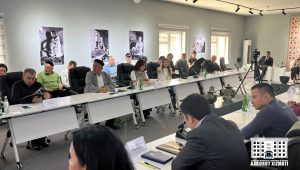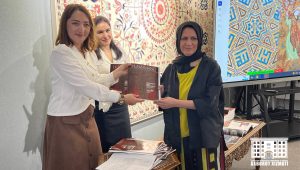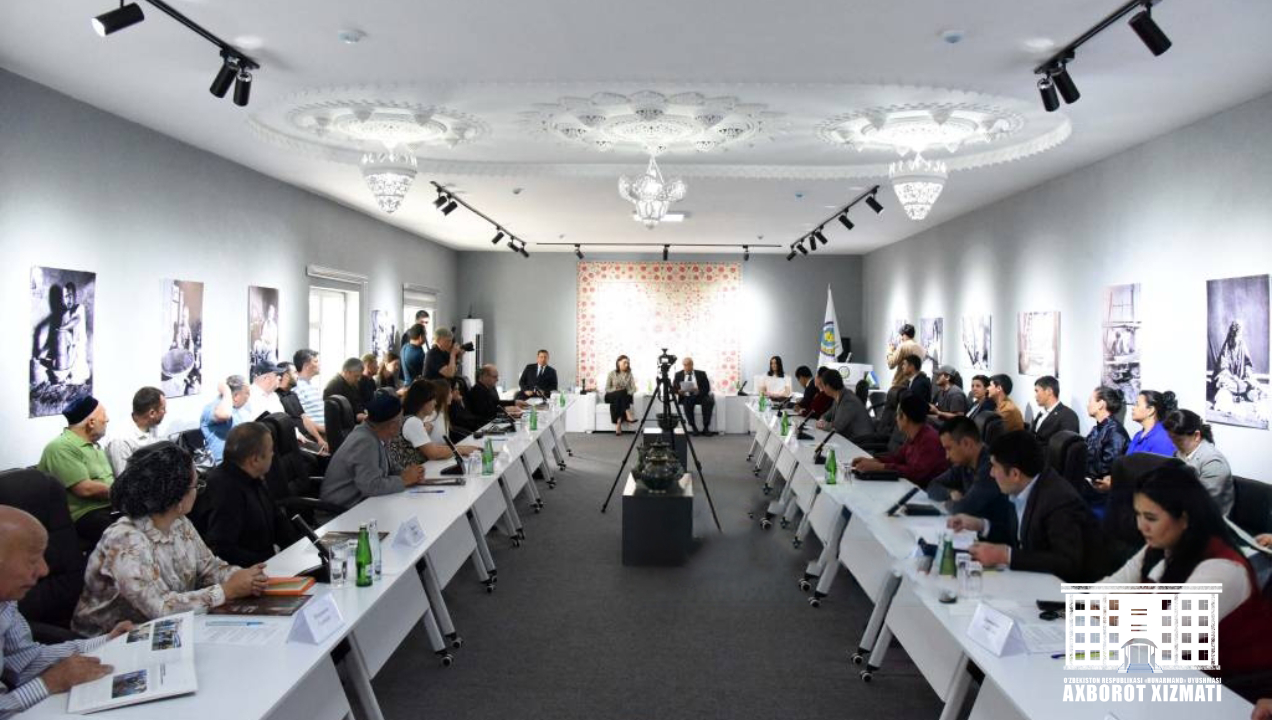On April 14, 2025, at 11:00, the “Hunarmand” Association of the Republic of Uzbekistan launched a roundtable discussion on “Developing Handicrafts: From Traditional Art to Innovative Business” and the presentation of the “Hunarmand” magazine at the association’s conference hall.
The event was organized to ensure the implementation “On the state program for implementing the strategy “Uzbekistan — 2030” in the “year of environmental protection and green economy” outlined in Presidential Decree DP-16.

The presentation was attended by members of the Legislative Chamber of the Oliy Majlis of the Republic of Uzbekistan, representatives from the Ministry of Justice, Ministry of Culture, Committee for Tourism, Chamber of Commerce and Industry, the Technical Regulation Agency under the Cabinet of Ministers, Uzbekistan Airways, Uzbekistan Railways, the Ministry of Investments, Industry and Trade, the Uzstandart Agency, as well as scholars, art critics, designers, and leading artisans.


Additionally, HUMO DOCUMENTARY LLC presented a platform aimed at developing cooperation in preserving and popularizing the cultural heritage of Uzbekistan and Central Asia.
The presentation of the “Hunarmand” magazine, published by the initiative of the “Hunarmand” Association, was held. This magazine will be published in Uzbek, English, and Russian four times a year.
The first issue of the “Hunarmand” magazine explores the centuries-old traditions of Uzbek applied arts and provides a fresh perspective on the artistic experiences of our master artisans. The magazine’s content includes interviews with leading master artisans, analytical articles on the trends in developing artistic crafts and noteworthy exhibitions, materials dedicated to under-researched or forgotten traditions, and historical essays.
A creative economy is an economic sector focused on creating goods (works, services) with economic value based on human potential, which is driven by creativity, intellectual abilities, innovations, and technologies.
The presentation on “Developing Handicrafts: From Traditional Art to Innovative Business” aims to adapt handicrafts to modern markets, create new value through design and technologies, and establish sustainable income sources while engaging youth and women. The main directions include integrating traditional products with modern design, ecological materials, and technologies, fostering collaboration between artisans and designers, and addressing issues such as product standardization (local and international experience).
The presentation on standardization (local and international experience) focused on topics such as branding, marketing, and certification under the “Made in Uzbekistan” brand for products entering international markets. Additionally, a presentation on Thai creative handicrafts was also held.
The event participants also discussed issues such as artisans’ participation in fashion weeks and design fairs, export facilitation and subsidy mechanisms, and services integrated with tourism (cultural tours, workshop visits).
Leading artisans also participated in the event, sharing their insights on the topic and addressing current issues and possible solutions.




